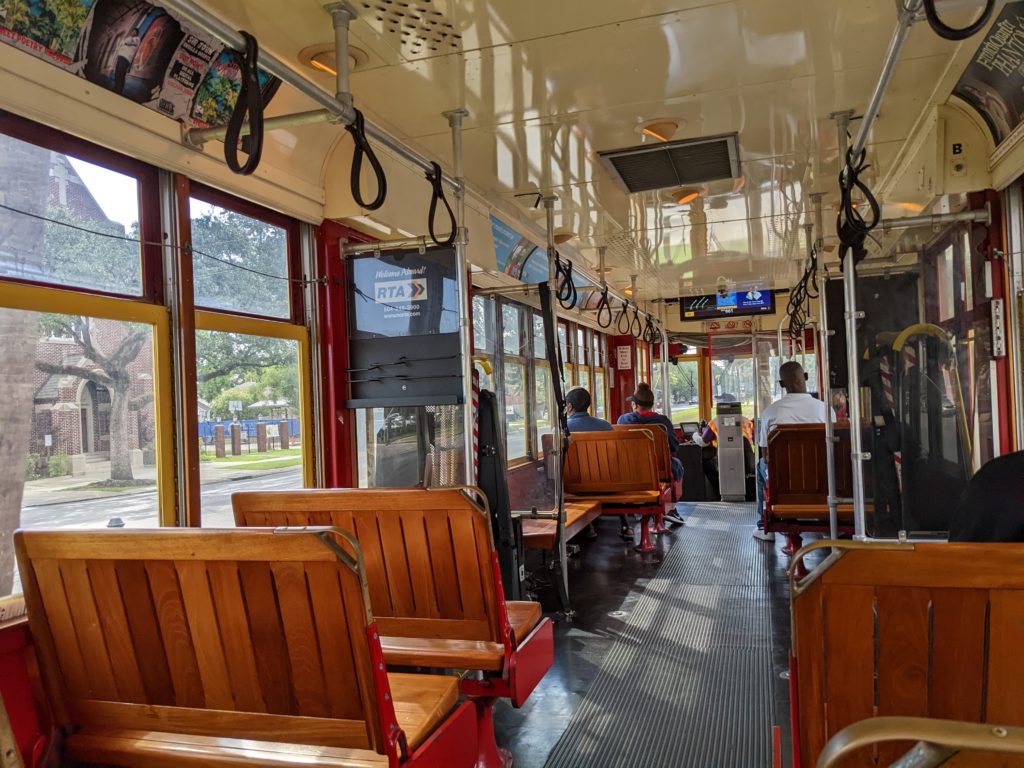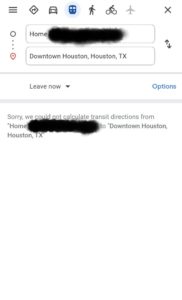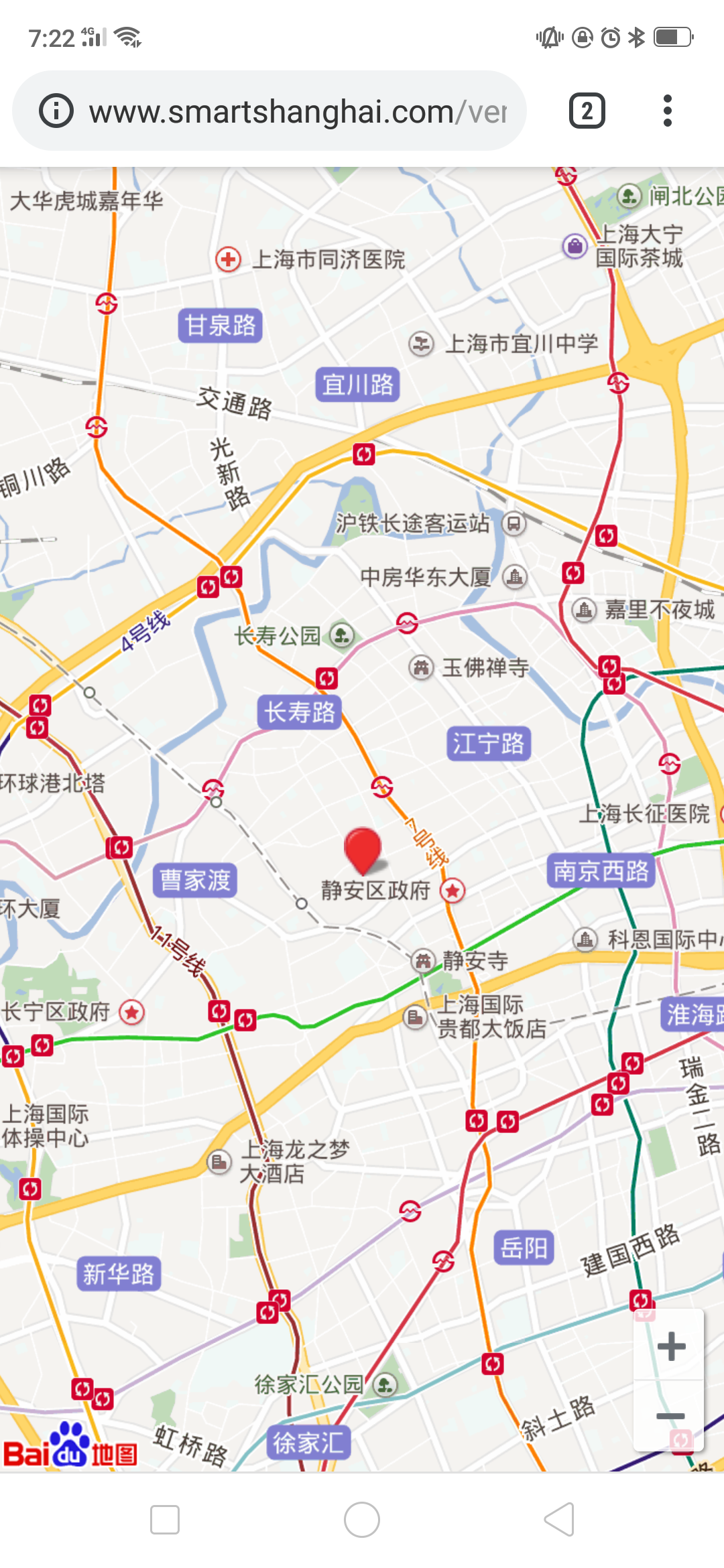Apparently it keeps going, doesn’t it.

You get to the French Quarter in New Orleans, Louisiana, USA by taking the streetcar on the corner of South Carrollton Avenue and Canal Street. It’s a buck fifty for anywhere you want to go between there and downtown.
You don’t gotta do nothing once you’re on. Take in the sights. Read a book. Play Nintendo Switch. Whatever you want until you hit your destination. Pull the line to let the driver know it’s your stop, and then off you go.
To get back, do the same thing going the other way.
You get downtown in Houston, Texas, USA by getting into your car and pulling onto I-69 East. Drive that way for the better part of an hour, depending on traffic. Keep your eyes on the road. You’re in control of a vehicle. And certainly don’t play Nintendo.
When you get stuck in traffic, constantly watch the cars in front of you for when they slow down. A wreck would cost you. The wear and tear on your vehicle will cost you. The gas will cost you.
You tried searching Google Maps for a route using public transportation to get downtown. It couldn’t find a route.

You get downtown in Shanghai by walking to the subway. From anywhere. There was always a subway station within a five minute walk.
Swipe your keychain card to pay the fare of about a buck, then have a seat. Read a book. Play Nintendo. And so on. The voice will say your station name, and then off you go.
When you first started teaching in Redondo Beach, California, you lived in Anaheim. If you drove at mid-day when there was no traffic, it was a 40 minute drive. If you drove in the morning or evening rush hour, it was two and a half hours of stop-and-go traffic.
Don’t read a book. Don’t play Nintendo. Don’t even take in the sights because there are none. Just sit there and look at the road and stop and go.
Google Maps found a public transportation route for that trip. It would take five hours and thirty minutes, assuming the buses came on time.
You’ve lived in Katy, Chiang Mai, Shanghai, Ridgecrest, Fayetteville, Seoul, Los Angeles, Busan, Anaheim, La Mirada, Anchorage, Lafayette, Houston, and Casper.

Of those places, none of the cities in America built up. Other than a small and dense area in the middle called downtown, they all built out.
Suburbs. Lawns. Eight-lane highways. Drive to the store. Drive to the restaurant. Drive to the park to take a walk. Drive to the mechanic to fix your car so you can drive to work. Get stuck in a traffic jam snaking miles long filled with five-person vehicles occupied by one individual.
But in a walkable city, everywhere feels like downtown.
Seoul was the first time you lived in a city that built up instead of out. You were twenty two years old and had just graduated college in 2008 with a degree in a dying field as you were released into a failing economy. Welcome to the world.
You got a job teaching your own language in a foreign country.
It was your first time in a city that built up and it also best highlighted the difference. Going to the store? Nevermind driving, you don’t even gotta go outside. The store is on the ground floor of your 20+ floor apartment building.
There’s also a great restaurant on the ground floor of your building, as well as more directly across the streets on the north, south, east, and west sides of the building.
Work is one subway station away.
Why would you ever buy a car here?
In Torrance, you were a teacher living in a studio apartment in 2014. It used to be a two bedroom apartment, but they stuccoed the door between the master bedroom and the rest of the apartment. That was your studio apartment: the master bedroom.

No kitchen, no stove, no laundry. Just enough room for a mattress to fit. You washed dishes in the shower.
You bought a cheap, used car because you were poor. It was a cheap car, so it needed repairs. That defined your economic cycle for three years in your mid twenties. Build up savings so you can pay for car repairs. Then rebuild savings for the next one.
Eventually that car died, and then you were down and out.
Time to relearn how to ride a bike, because you’re never getting there on time with the bus. Need groceries? Hope you’re not too tired from biking home, because it’s time to strap on the backpack and bike to the grocery store. Put the chicken breast in the front pocket, frozens in the second pocket, beer in the main pocket.
You can’t afford beer. But you can’t afford to not have beer.
You weren’t poor when you lived in Shanghai, but you still didn’t bother buying a car. As you rode the subway, you often thought about how people down and out in Shanghai wouldn’t need to arrive at work a sweaty mess after biking to work.
On the subway, you saw the rich and the poor. The city built the infrastructure, and now it serves all. People who cannot afford to maintain a car need not be burdened by owning one. This massive metropolis felt tiny thanks to the convenience of good public transportation.
This is a way that cities can be built. Up, and compact. Convenient, affordable, enjoyable. Likely more sustainable too, both environmentally and financially. More tax revenue packed into a tighter space of land.
Sure, you still gotta move out of the city to get your plot of land and your green grass. But you never liked mowing the lawn, anyhow.



